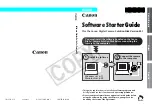
Installing Networked Messaging (VPNM)
Voicemail Pro Installation and Maintenance Guide
Page 67
IP Office
15-601063 Issue 15b (31 May 2006)
Directory View in Interchange for Intuity Audix and Voicemail Pro
Setting the directory view specifies which other messaging machines can provide subscriber updates to
a particular messaging machine. Each machine listed is associated with a range of mailboxes from
which updates can be accepted and whether a voiced name can be accepted.
1. Select Interchange Administration > Remote Machine Administration > Directory Views.
2. At the Machine Name prompt, select the Voicemail Pro.
3. Select the Options key and then Add all entries.
4. Select Save.
5. Repeat these steps for the Avaya Intuity Audix.
Avaya Interchange Enterprise List Administration
This section describes how to configure a list of endpoints in the Interchange. Interchange-based lists
are an efficient way to send messages to stable lists of mailboxes. Only one copy of the message is sent
from the originating system to the interchange, which takes care of distributing that message to the
destination machines and mailboxes.
1. From the Interchange Main Menu, select Interchange Administration > Enterprise List
Administration > System Parameters. Set or check the address range of the interchange Dial
Plan that can be used for lists.
2. From the Interchange Main Menu, select Interchange Administration > Enterprise List
Administration > List Definition.
Choose a unique list id from the list range and assign an owner.
In the 'Network Address' grid, enter the list of destination addresses from the Interchange
Dial Plan.
The 'Remote Address' grid should contain the systems where those destinations reside.
The range of mailboxes that have permissions to send through the list is set in the
'permissions' grid.
Configuring a DNS Server
A Domain Name Service Server is not required for the messaging systems, but may be a highly
desirable way to centralize the mapping of names to IP addresses. This section briefly describes the
setup of DNS server used in this type of configuration.
To configure a DNS Server:
1. From the Start menu of the PC running Microsoft Exchange Server, select Programs |
Administrative Tools | DNS. If DNS is not available, DNS needs to be installed from the
Operating System CD.
2. Check that there is an entry within the domain for each messaging hosts involved.
3. Configure each PC to use the DNS server to resolve names. This is done in the Internet protocol
(TCP/IP Properties form of each LAN interface).
















































